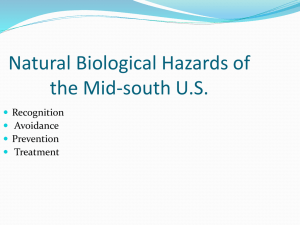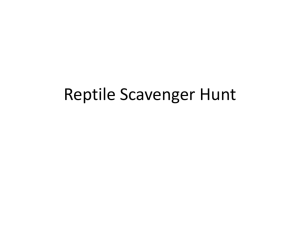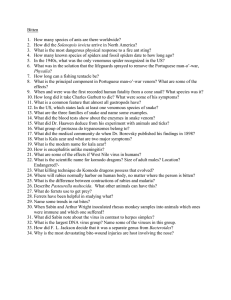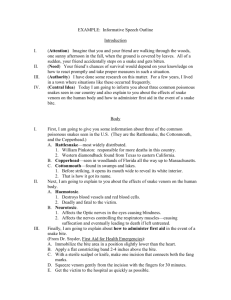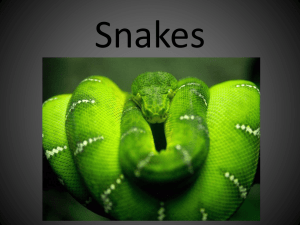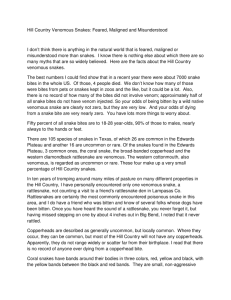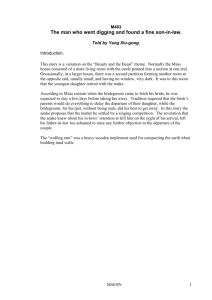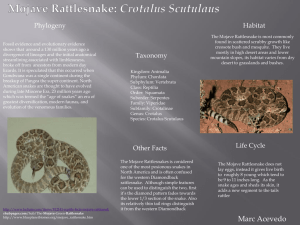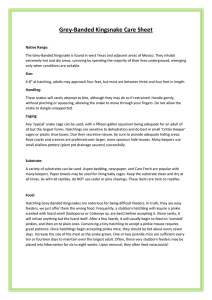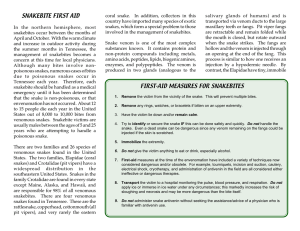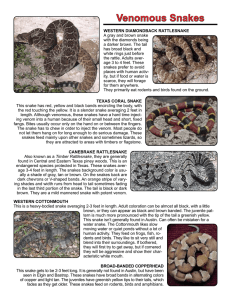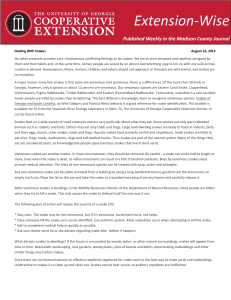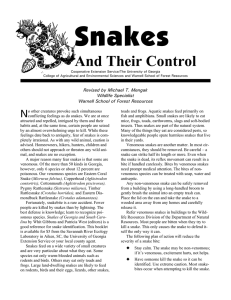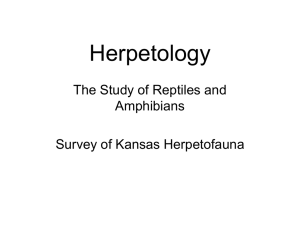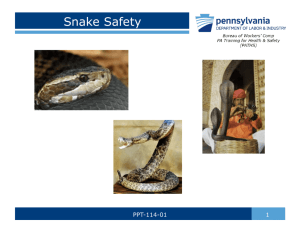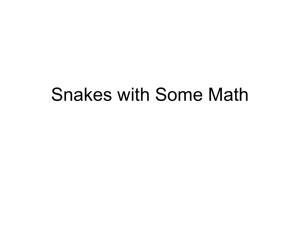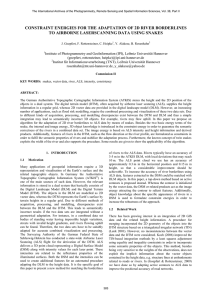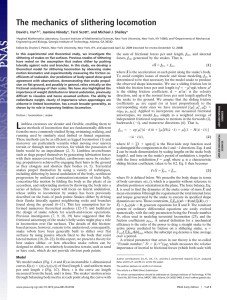Snakes and Crocodilians
advertisement
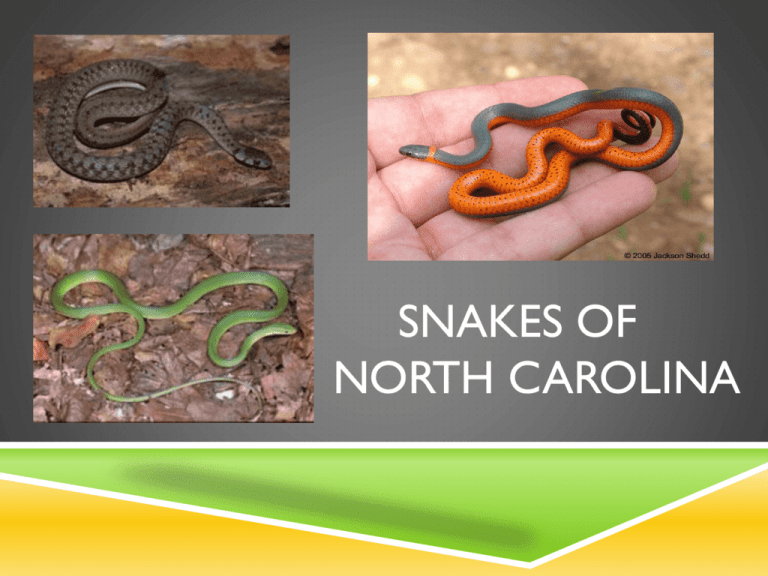
SNAKES OF NORTH CAROLINA Tertiary Consumers Eat mice, birds, other snakes, lizards, frogs, fish Helpful in controlling rodent populations Cryptic • 37 species in NC • 6 venomous species • Copperhead, Cottonmouth, Coral Snake, Timber Rattlesnake, Eastern Diamondback Rattlesnake, and Pygmy Rattlesnake • Majority of species are not venomous Brown Snake (Storeria dekayi) • Pale stripe down back • Row of small dark spots along sides • Found in flowerbeds (mistaken for baby copperheads) • Eat slugs, earthworms, snails Eastern King Snake (Lampropeltis getula) Strong constrictors: eat rodents, small turtles, salamanders, snakes (venomous and non venomous) Diurnal and often found on farms/suburban areas Immune to the venom of pitvipers (copperhead, cottonmouth, rattlesnakes) Northern Watersnake (Nerodia sipedon) Heavy-bodied Confused with Cottonmouths Front crossbanded but the bands begin to alternate on middle and posterior portions of the body Diurnal and nocturnal When threatened, they flatten bodies/spread jaws to make themselves appear larger Aggressive Black Rat Snake Black Racer (Elaphe obsoleta) (Coluber constrictor) Highly variable in color Racer Quick and aggressive Keeled scales, white and black markings on Smooth scales, large eyes, belly Constrictors: eat mice/rats, birds, eggs Arboreal Common in populated areas-occasionally found in chimneys, attics, and basements. some have whitish chin Chase down prey: rodents, Rat Snake lizards, insects, other snakes, frogs Diurnal Racer Rat Snake Copperhead (Agkistrodon contortrix) Most common venomous snake in NC Heavy bodied Dark brown hourglass shaped marks Babies have a yellow/green tail used to lure in prey Often found in established neighborhoods Vibrate tail when disturbed Bite is painful but rarely fatal Worm Snake (Carphophis amoenus) • Pinkish/whitish bellies that • • • • extends partially up sides Sharp points on tail Small head for burrowing after insects/earthworms Most active at night-found in rotting logs but may burrow deep into the soil during dry spells Never bite but wiggle a TON Corn Snake (Elaphe guttata) Square blotches on back Young have darker blotches Strong constrictors Most active at night Found around edges of fields, clearings, or in barns to feed on rodents. Ringneck Snake (Diadophis punctatus) • Distinctive yellow/orange ring around neck • Dark gray/black back with yellow/orange/red belly • Forest dwellers-rotting logs, leaf litter, flowerbeds Curl tail to ward off predators CROCODILIANS Osteoderms Bony deposits that form scales/plates in the dermal layers of the skin Temperature Sex Determination Sex of offspring determined by the temperature at which eggs are incubated Tertiary Consumer Eat turtles, snakes, birds, mammals, etc American Alligator (Alligator mississippiensis) Can grow up to around 16ft Females build nests out of decaying organic material to heat the eggs Guard young for up to 3 years after hatching Diurnal and nocturnal
